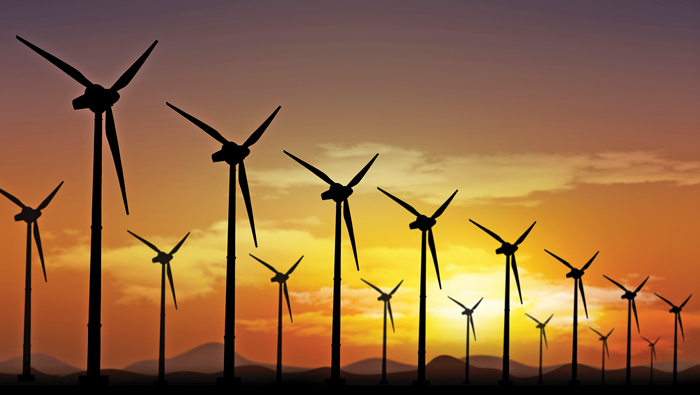
Muscat: 16,000 homes in the Dhofar region will soon receive electricity from an upcoming wind power project that is expected to be up and running by the third quarter of 2019.
The Dhofar Wind project, which is being set up in the Fatkheit region in the Wilayat of Shaleem, as well as the Hallaniyat Islands of the Dhofar Governorate, is owned by Tanweer, a company under Oman’s Rural Areas Electricity Company (RAECO), and has a total investment of OMR 40 million.
Many of the major elements required to run the project, including wind turbines, towers and the power stations have been installed. The project is being overseen by the Sultanate’s Ministry of Oil and Gas, in cooperation with the Implementation, Support and Follow-up Unit (ISFU), the government body that looks after the implementation of the Sultanate’s Tanfeedh plans for economic diversification.
Energy, as mentioned in the ISFU’s annual report, is part of a major section of Oman’s economic diversification, as it looks to wean itself off traditional oil and gas sources of fossil fuels, not just as sources of revenue, but to provide energy to its industries as well.
“As part of the government efforts to diversify the economy as per the ninth five-year plan, the Ministry of Oil and Gas and the Public Authority for Mining has organised six-week energy and mining labs, supported by the Implementation Support and Follow-up Unit,” said an ISFU representative . “The labs, which were convened in 2018, were attended by representatives from both public and private sectors, experts and representatives of the public. During the labs, initiatives were identified to be implemented based on specific performance indicators.”
“The energy strategy covers enhancing energy security by diversifying sources to generate electricity without gas,”. This can be achieved by finding alternative energy sources, thereby enhancing the provision of gas and electrical energy to the industrial sector to expand the economic industries, in addition to governing the energy sector by implementing improvements and syndicating the governance of the sector with the laws and regulations related to gas and electricity. Plans were on to identify natural gas, electricity and alternative energy governance as sub sectors under Energy.
“Through these labs, both the Ministry of Oil and Gas and the Public Authority for Mining aimed at activating the enablers, exploiting the resources of energy and mining sectors, and overcoming the difficulties both sectors face in order to develop initiatives and projects that enhance the contribution of these sectors in the economy,” added the ISFU. “This will be achieved by defining the strategic direction, which was discussed during the labs, and which will be now translated into practical initiatives and projects that will be executed according to specific timelines and detailed implementation plans.”
Feasibility studies for the Dhofar Wind project began before 2018, and after approval was received, tenders for the project were handed out in the first half of 2018. Construction of the plant began in the second quarter of 2019.
There are eight elements involved in the transmission of energy from the wind turbines to homes.
Energy from the wind turbines are fed into transformers, which channel them through towers into a step-up transformer that then distributes it to transformer substation. This is then sent to homes through distribution substations.
Renewable energy is also expected to play a big role in the country’s manufacturing sector, providing the energy required to convert raw materials into finished goods. Part of the Sultanate’s energy plan includes not just exploring the potential for alternative energy, but forming a plan to ensure all future energy projects meet the correct environmental standards, called the National Environmental Policy for the Energy Sector (NEPES)
“The Sultanate of Oman is among the countries that depend on natural gas to generate power despite the availability of other renewable resources (which are not adequately used),” said a Tanfeedh statement.
“Approximately 97% of the Sultanate’s electricity is generated by gas-powered facilities. Yet, gas supplies will not be able to fulfill increasing demand in the future. This will require the use of alternative energy sources.
“The lack of clear environmental standards for power generation limits the ability of investors to allocate funding in alternative sources of energy,” added the statement. “This initiative encourages setting a new national environmental policy for generating power, which includes encouraging generation from alternative sources based on international practices. While there are existing environmental standards to utilize natural gas, coal, and oil, there are no standards related to pet-coke, diesel, and renewables.”
To help implement the ninth five-year plan diversification objectives, the Implementation Support and Follow-Up Unit (ISFU) conducted several labs in other potential sectors: fisheries, energy and mining.
“The diversity of the country’s natural resources presents the country with a unique opportunity to achieve its economic diversification objectives,” the ISFU added. “The results of these labs will be used for creating a roadmap to implement the national strategic objectives, ensuring that public are well-informed with the projects’ updates and achievements on a regular basis.”
--